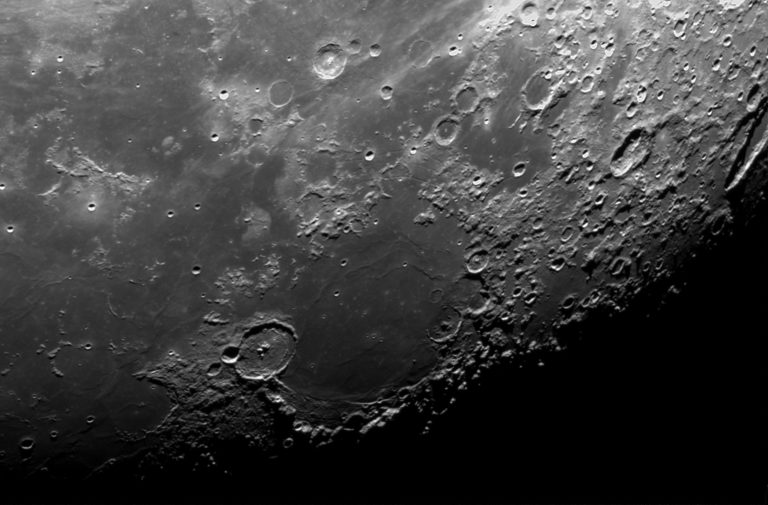M33 – The Triangulum Galaxy This is about two hours each of LRGB (in each filter) with the Takahashi FSQ85 telescope and Atik 460 CCD camera with Baader LRGB filters. I did not use a Ha filter on this image. The data was collected on 29th November 2013 and it was the second light of the telescope (first light being The Double Cluster here). The telescope performs superbly and is very well colour balanced.At a distance of about 2.8 – 3.0 million light years, M33 is the most distant object that can be viewed by the unaided eye and is visible in a dark sky setting as a very tenuous patch of light. Being a face-on galaxy, it has rather low surface brightness and it lacks a bright central core making it quite hard for beginners to find as they expect to see something much brighter and more colourful. The…
A famous string of galaxies in the constellation of Virgo, named after the astronomer Benjamin Markarian who first discovered their common motion. The chain contains several Messier catalogue objects and is visible in the late winter and spring in the Northern Hemisphere. The galaxies are located between 65-75 million light years away and are nice objects to observe with a telescope if you can do so from a dark sight.This image was created from a data set acquired in Spring 2019 with my FSQ85 refractor.Image is centred on “The Eyes” of NGC4435 and NGC4438 just below dead centre of the image. At the bottom is the monstrous supergiant elliptical galaxy M87, the most massive object in the local universe harbouring the famous black hole recently imaged with the event horizon telescope. Markarian’s Chain in Virgo Below is an inverted version that help show the galaxies with more contrast. Inverted Version…
The Perseus Galaxy Cluster (Abell 426) is one of the most massive known objects in The Universe. It is a supercluster of galaxies with thousands of individual members located between 230-280 million light years away. The galaxies are located within a vast cloud of enveloping gas, the gas being much more massive than the total mass of the galaxies themselves. This area is very important for physicists testing the theory of relativity. It is clear from the red patches on the main Perseus galaxy itself (NGC 1275) slightly to left and bottom of this images centre (at the eight o’clock position) that something dramatic is happening inside this galaxy. Perseus A Technical Information Imaged from my backyard observatory in Nottingham, UK with my TEC 140 refractor and Atik 460 CCD camera with Astrodon LRGB filters between October 2019 to January 2020. The image was created from 20 x 900s luminance exposures…
3C273 3C273 Annotated Not the most exciting of images but significant for what is actually shown here. Just looking at the photo on the above left, you’d be forgiven for thinking this was just an image of a star field, a boring one at that. However, this is a picture of the Quasar 3C273 in Virgo, one of the most distant objects possible for an amateur astronomer with instruments available to the average amateur to see. Light left this object two billion years ago! 3C273 is the 273rd object in the Third Cambridge University catalogue of radio objects. It was discovered as an extremely bright source of radio waves long before it was identified visually. It was the first ever quasar to be discovered in 1959. It represents an extremely active core of a very distant galaxy, so distant that we only see the core and not the outer parts…
A few pictures of the moon that I took with my Meade 14 ACF SCT scope with a ASI 174MM camera in January 2020. The pictures utilised no filters at all. Copernicus Area Apollo 11 Area Plato Region Mare Humurum Region The Meade 14″ is an astounding scope that I liked very much. However, with a heavy heart I subsequently went on to sell this telescope since I felt that in my Bortle 5skies it doesn’t offer any significant advantage over and above the Celestron C925; the latter scope being very much more manageable that the huge (and very heavy) 14″ Meade. At some point in the future I may regret this decision since the scope excelled on the few occasions I took it to truly dark skies. However, I could not let my heart rule my head and I decided to sell it.




